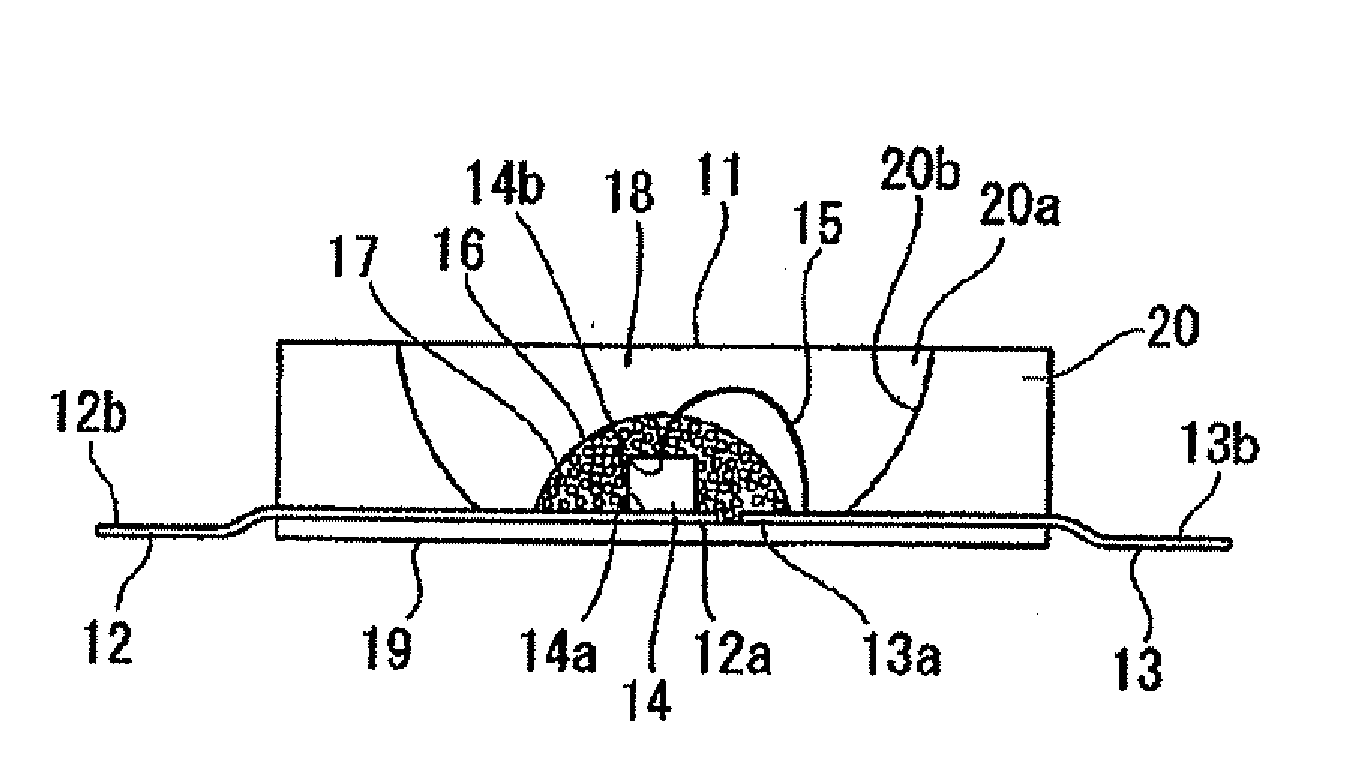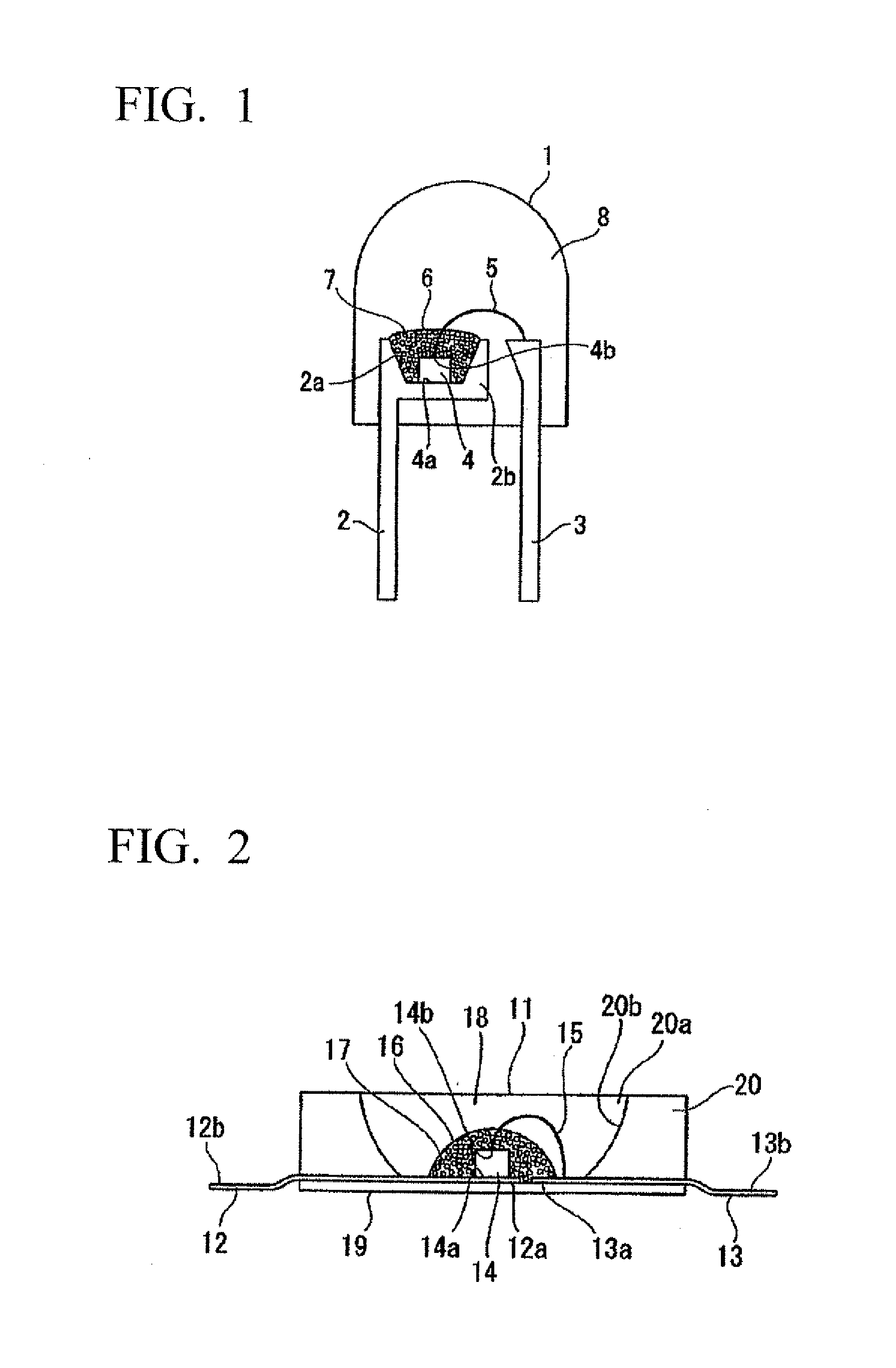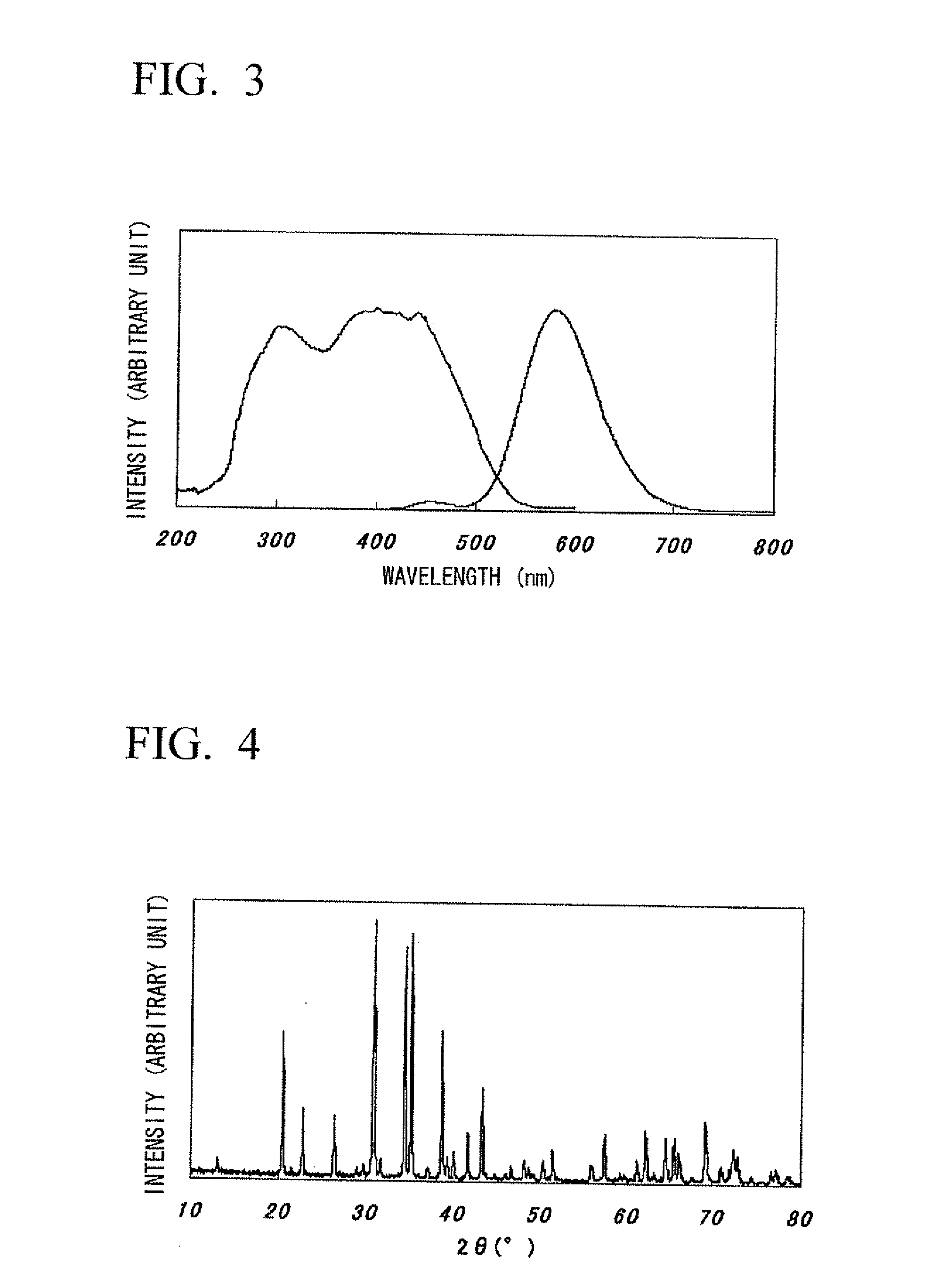Fluorescent substance, method for producing the same, and light-emitting device using the same
a technology of fluorescent substance and light-emitting device, which is applied in the field of fluorescent substance, can solve the problems of insufficient emission of fluorescent substance described in patent document 2, inability to yield white light when combined with a blue, and inability to yield white light, so as to avoid the influence of surface defects, high emission intensity, and high emission intensity
- Summary
- Abstract
- Description
- Claims
- Application Information
AI Technical Summary
Benefits of technology
Problems solved by technology
Method used
Image
Examples
first embodiment
[0127]As a first embodiment of the illuminator of the present invention, a shell-type white light-emitting diode lamp (LED illuminator) 1 as shown in FIG. 1 is described.
[0128]The shell-type white light-emitting diode lamp 1 comprises a first lead wire 2 and a second lead wire 3. The first lead wire 2 has a recess 2a. On the recess 2a is mounted a blue light-emitting diode element 4. In the blue light-emitting diode element 4, a lower electrode 4a is electrically connected to the bottom face of the recess 2a by a conductive paste while an upper electrode 4b is electrically connected to the second lead wire 3 by a bonding wire (thin metal wire) 5.
[0129]The first resin 6 is a transparent resin having a fluorescent substance 7 dispersed therein, and covers all over the blue light-emitting diode element 4. The apical end 2b of the first lead wire 2 including the recess 2a, the blue light-emitting diode element 4, and the first resin 6 having the fluorescent substance 7 dispersed therein...
second embodiment
[0133]As a second embodiment of the illuminator of the present invention, a surface-mount chip-type white light-emitting diode lamp (LED illuminator) 11 as shown in FIG. 2 is described.
[0134]In the surface-mount chip-type white light-emitting diode lamp 11, a third lead wire 12 and a fourth lead wire 13 are fixed to a ceramic substrate 19 which uses a white alumina ceramics having high reflectance against visible light, ends 12a and 13a thereof are located in an approximate center of the substrate, and the other ends 12b and 13b are located outside to serve as electrodes to be soldered when being mounted on an electric substrate.
[0135]A blue light-emitting diode element diode element 14 is mounted on and fixed to the end 12a of the third lead wire 12 in a center of the substrate. The lower electrode 14a of the blue light-emitting diode element 14 and the third lead wire 12 are electrically connected by a conductive paste while the upper electrode 14b and the fourth lead wire 13 are ...
examples
[0155]The present invention is described in further detail below using examples, although the examples are disclosed for better understanding of the present invention and the present invention is in no way limited by the examples.
PUM
| Property | Measurement | Unit |
|---|---|---|
| refractive index | aaaaa | aaaaa |
| temperature | aaaaa | aaaaa |
| emission peak wavelength | aaaaa | aaaaa |
Abstract
Description
Claims
Application Information
 Login to View More
Login to View More - R&D
- Intellectual Property
- Life Sciences
- Materials
- Tech Scout
- Unparalleled Data Quality
- Higher Quality Content
- 60% Fewer Hallucinations
Browse by: Latest US Patents, China's latest patents, Technical Efficacy Thesaurus, Application Domain, Technology Topic, Popular Technical Reports.
© 2025 PatSnap. All rights reserved.Legal|Privacy policy|Modern Slavery Act Transparency Statement|Sitemap|About US| Contact US: help@patsnap.com



